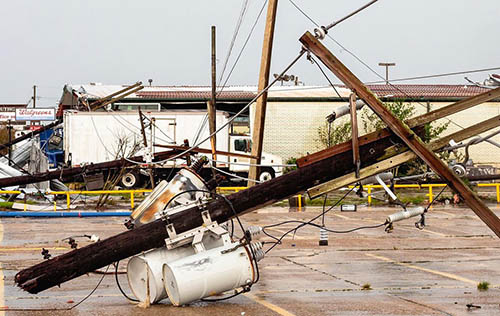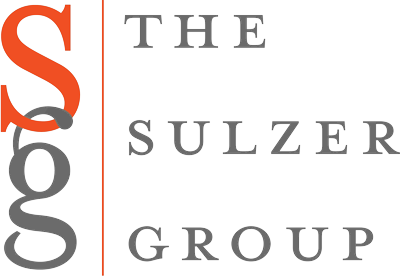Grant Administration
 Navigating disaster recovery grants requires specialized expertise. Our grant administration services help clients secure, manage, and maximize federal, state, and local funding for disaster recovery efforts. We oversee every aspect of the grant lifecycle, from application and compliance to financial reporting and closeout.
Navigating disaster recovery grants requires specialized expertise. Our grant administration services help clients secure, manage, and maximize federal, state, and local funding for disaster recovery efforts. We oversee every aspect of the grant lifecycle, from application and compliance to financial reporting and closeout.
Working closely with clients ensures that funds are used effectively and in full compliance with regulatory guidelines, reducing the risk of audit findings and maximizing the impact of each grant dollar. With a track record of administering over $1 Billion in disaster recovery funds, our team is a trusted partner in grant administration.
The Sulzer Group has developed a six-step approach to the scope of work identified in the RFP. Our experience with applicants similarly situated will assist in cutting down on any learning curve. Once we get a preliminary understanding of the status of each of the projects, we can further develop and refine this plan in order to meet the needs and goals of the client more closely.
– Our Six Step Process –
Kickoff
Within two days of notification of award, we will schedule an initial meeting to introduce the Sulzer Project Staff to all members of the client and your key staff members who will be supporting this effort.
We will clearly outline the role of team members and their responsibilities over the first 30 days and will include a survey of the existing needs and plans, current disaster recovery projects, and an assessment of the role of our team in assisting in the compilation of relevant material necessary for closeout.
Data Collection
Within the first week of the kickoff meeting, we will work deliberately with your staff to understand the current status of projects and the amounts that have been awarded and/or reimbursed.
Understanding the current manner in which the projects and grant have been monitored and tracked is critical.
To the extent the client has its own tracking system; we will use and build upon that process. Regardless, the first step in understanding the current state of the grant is to collect all data related to the recovery, including but not limited to:
• Organizational documents
• Listing of properties/damaged facilities
• Insurance policies and claims adjusters’ reports Damage assessments
• Correspondence with FEMA/State authorities
• Contracts for debris removal and emergency protective measures
• Actual costs incurred to date
• Invoices and documentation of payment
If the client has been keeping their own electronic records, we will import that data into our database and perform a reconciliation.
From this point through project closeout, we will update this data with the most current information available. This database will hold real-time data that will reflect an accurate, up to date financial picture of each PW.
All hard copies of reports, correspondence, estimates, valuations, etc. will be electronically scanned and cross- referenced to the PW numbers in the database for effortless tracking and recall. This tool will also be used to design and produce internal and external reporting on the project and assist in preparation for any audit, and most importantly for closeout.
PA Claim Development
Once the data collection step is complete, we will then have the ability to evaluate what has been done and develop a path forward. This will begin concurrently with our data collection and commence within the first two weeks following the kickoff.
We will determine where the projects are in the PA process and review key documents such as the Damage Inventory (DI), the Site Inspection Reports (SIRs); review Damage Descriptions & Dimensions (DDD) submissions; review existing and develop needed Scopes of Work (SOW); and review any Cost Estimates (CEF).
This information becomes the basis of the public assistance claim submitted to FEMA.
Project Management & Procurement
In tandem with Step 3, Sulzer Group will perform traditional Project Management services to ensure compliance with programmatic policies and guidelines.
Proper procurement, design management, and construction administration are all essential elements of the project management function to ensure the activities performed during recovery match those written in the Project Worksheets.
Sulzer Group will manage the entire process from soliciting/evaluating the necessary resources, to drafting/negotiating contracts. Realizing there may be several projects underway, our project manager and team of engineers, architects, construction managers and estimators will begin delving into the details.
The construction manager will begin regular site visits, and the estimator/scheduler will track, review, and evaluate the schedule & budget for all ongoing activities. Our project manager will review all scheduled projects not underway to develop an in-depth understanding of the budget, cost estimates, design program, and the construction & design timelines.
Our team will perform a thorough design review with the professionals of record to evaluate the design program and how closely the scope is aligned with the goals and expectations of the client. We will also begin building the project management support infrastructure by performing the following:
• Proper procurement of goods and services related to the PA grant;
• Evaluate project design to ensure compliance with PW scope of work;
• Act as owner’s representative on all construction projects;
• Evaluate and/or implement processes for scope changes, construction change orders, RFIs, and schedule adjustments;
• Attend/establish construction progress meetings; and
• Evaluate/implement a system for documenting minutes, action items and completed items during internal and external meetings.
Grant Management
It is also vital to the success of any project to have an efficient method of recording, documenting, reviewing, and approving all communications and transactions. Since Hurricane Katrina, Sulzer Group has developed and continues to update its processes to address our clients’ needs for assistance with this critical element of their recovery efforts.
We intend to implement the following processes to ensure maximum reimbursement and an effective operational flow:
• Develop and document guidelines for compliance with contracted scope of work;
• Implement process to review and approve all pay applications;
• Implement processes to prepare and/or coordinate submittal of RFRs;
• Implement processes to track the status of RFRs to anticipate receipt of funds;
• Update Sulzer Group database to accurately reflect most recent funding and payment activities; and
• Develop a standard set of internal/external reports for the client at required intervals.
Closeout Workbook Generation
Once a project is completed and all reimbursements have been received, we will use the data collected in Steps 1-5 to generate the State recovery authorities’ project closeout workbook.
Critical in that process is a determination of whether any closeout versions (revisions, additions, deletions) are needed. Because the State recovery authority’s closeout is primarily focused on reconciliation of reimbursed funds and because of the large number of project worksheets which may be written for the client in connection with federally declared disasters, it is imperative that any closeout versions be identified so that any reimbursement errors are addressed.
The database created by our office will generate the initial draft of the workbook based upon the information captured during the course of the project.
;




